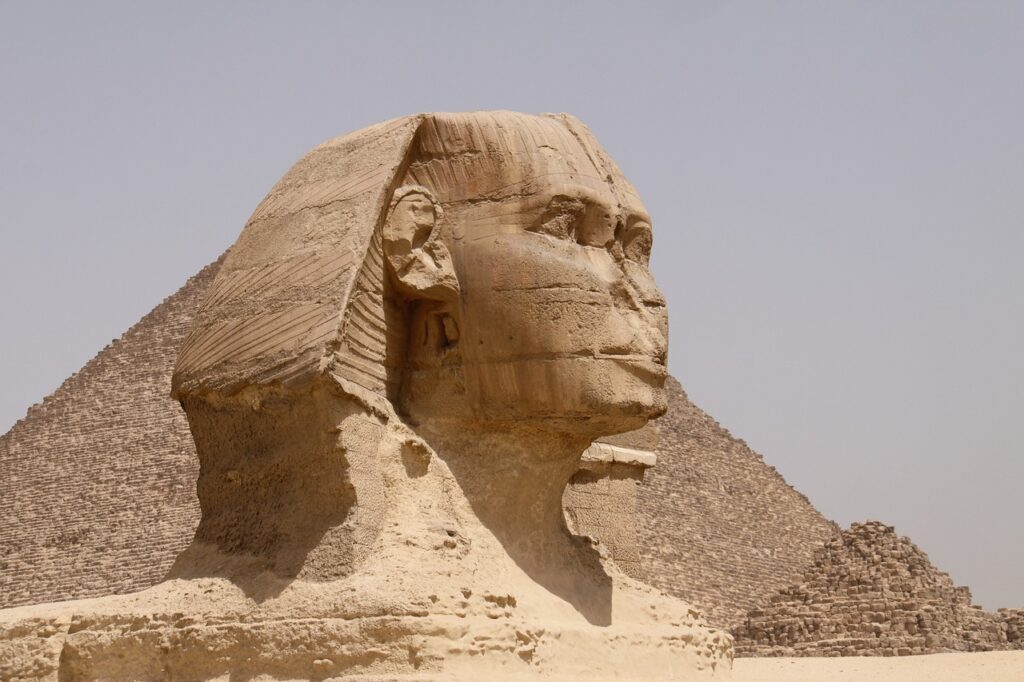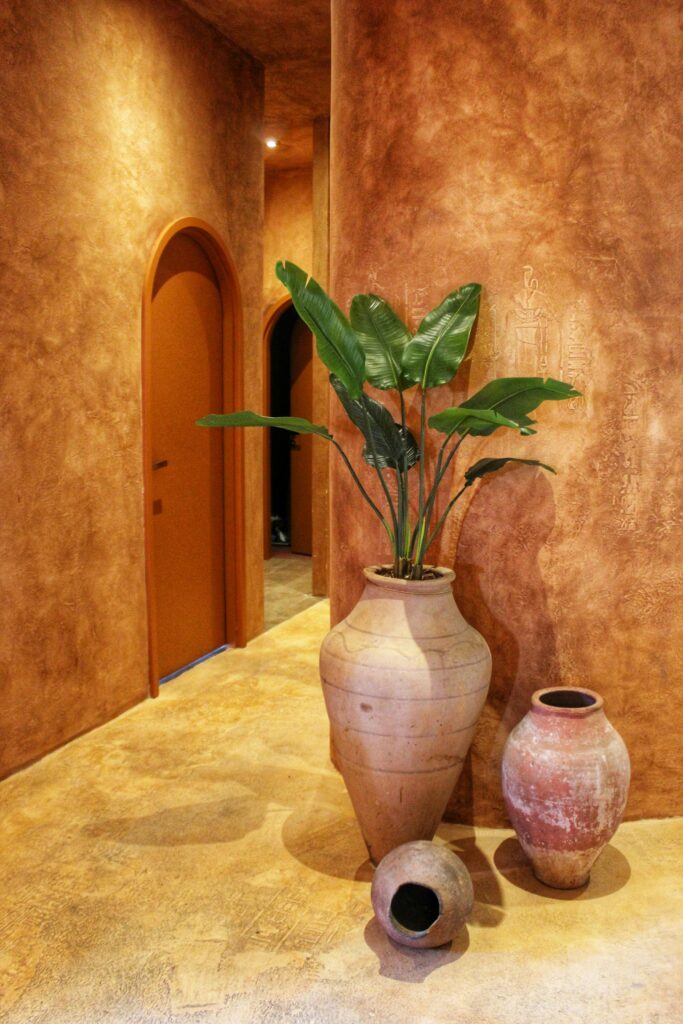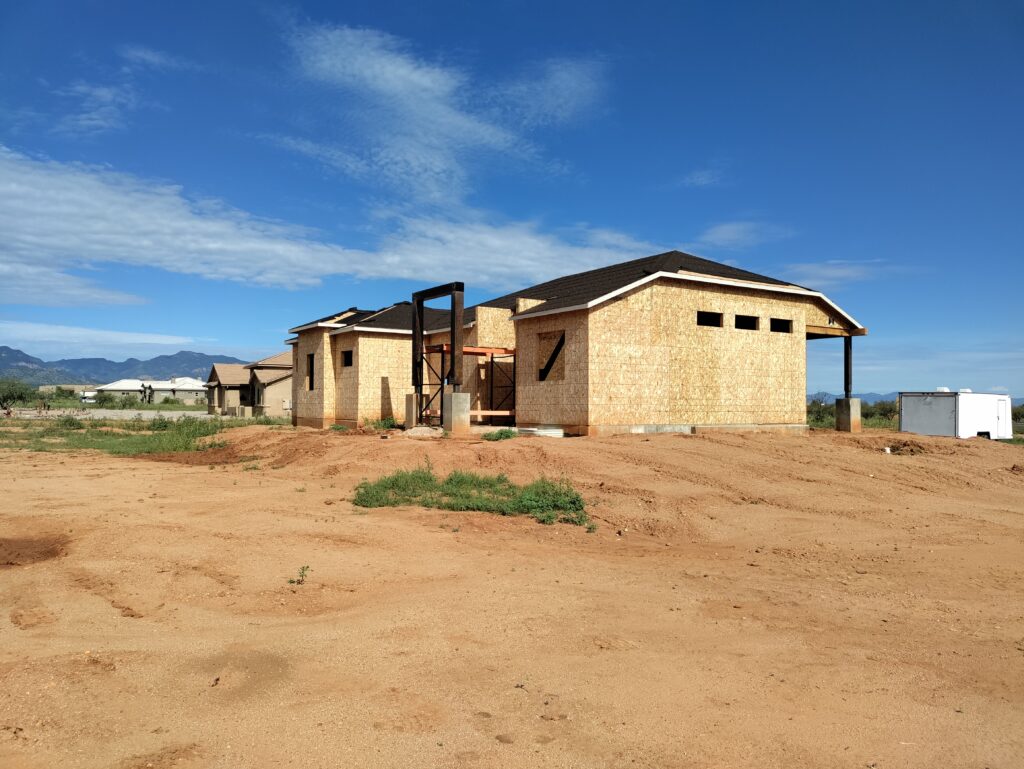Those who have experienced natural earthen walls and floors often fall in love with them! They create a certain set of feelings involving multiple senses. First is the way they look with an interesting and attractive artisan aspect – the inherent “flaws” of hand made vs machine made, the soft curves vs sharp corners, the unique earthen colors and marbling effects, etc. The acoustics are very distinct and impressive. There are different smells which seem unnoticeable, especially compared to the nasty VOCs released by all the synthetic materials comprising so many walls and floors. The literal feel is also quite comfortable when touched with your hands or bare feet.
As explained in many posts on healthy building, we’ve found earthen building to be the best option for us. But until now, I haven’t really talked about healthy interior and exterior design. After extensive research we landed on lime as the material of choice (same thing used inside our dome walls). Surprisingly, we didn’t find a lot about it from sources geared for mold avoidance. Most mold avoidance advice requires going to extreme lengths (and expense) to try and make popular modern building materials and methods more mold resistant.
Lime: Lost Art
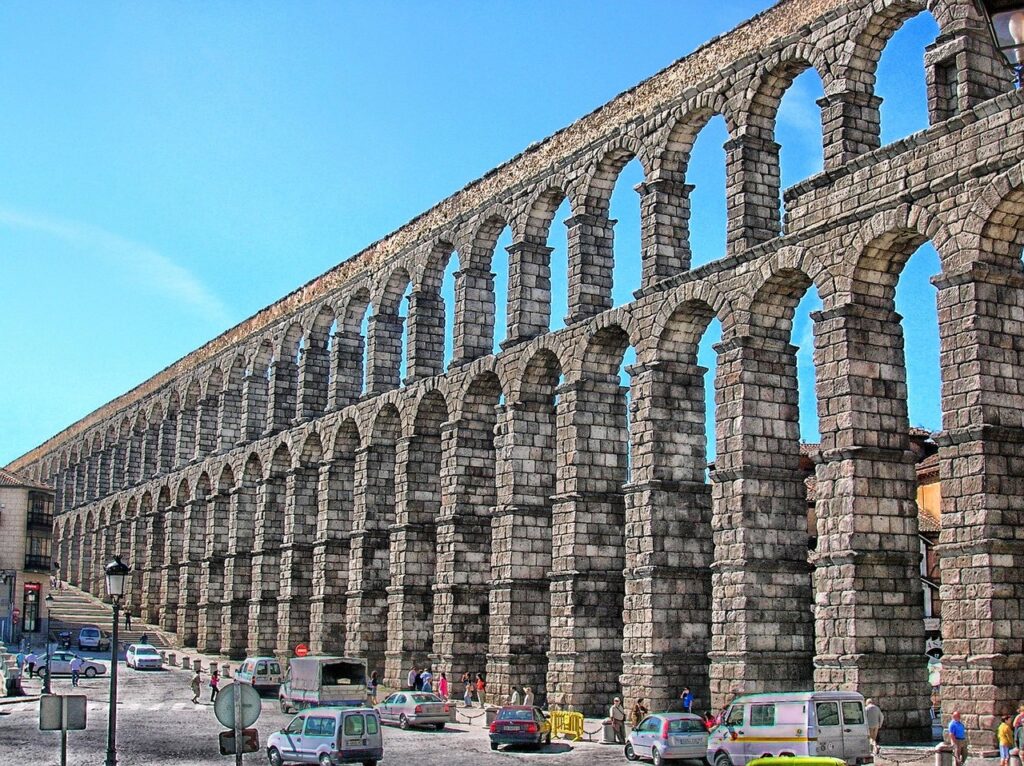
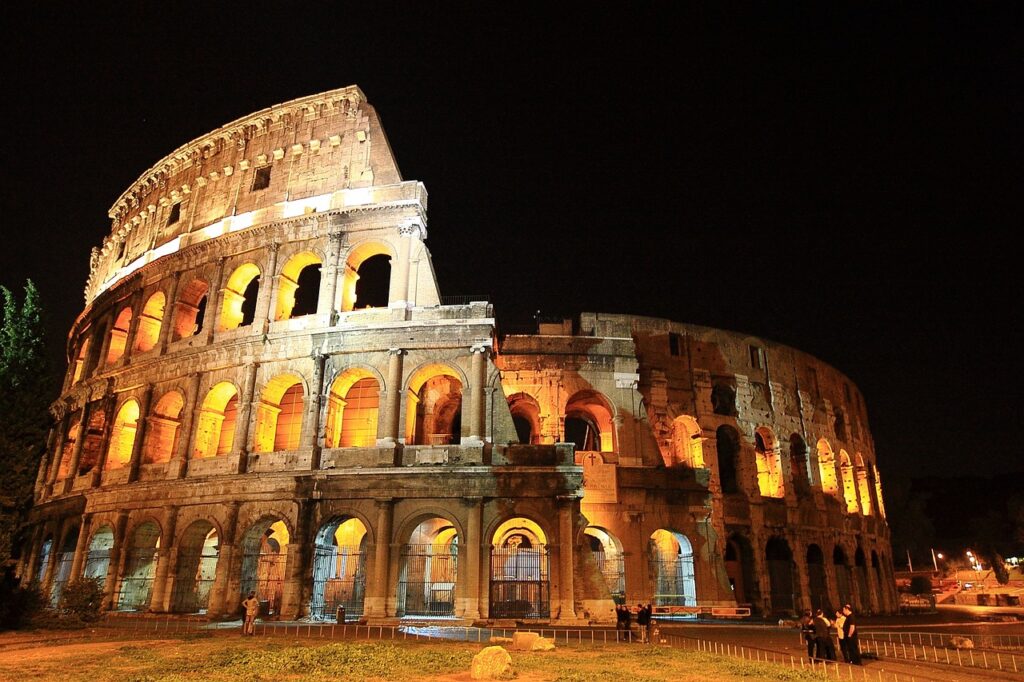
Lime has been used in construction for thousands of years with some ancient structures still standing (eg. Roman Aqueducts and the Colosseum where throngs of spectators cheered the death of Christian martyrs who were fed to lions and experienced other horrifying deaths because they refused to deny Christ)! The Romans used lime to make concrete, among other uses. Lime is limestone that has been crushed and heated over 900°, becoming a fine powder. When water is added it becomes a highly alkaline mix that kills mold and deactivates mycotoxins. It can be mixed with various aggregates and used to build strong walls, mortar, and plaster that is resistant to mold and critters such as termites. You may have also heard of lime-wash or whitewash, which is a natural paint. Over time as lime repeatedly gets wet and dries, it turns back into limestone!
Lime, in various formulations, has been widely used throughout the world throughout most of history. It is still frequently used in Europe, but in America Portland Cement has mostly replaced it (in which lime is an ingredient). Portland is harder and will not bend, so it inevitably cracks instead. These cracks allow water (and bugs) into places you don’t want and because it doesn’t breath, the moisture is trapped. This leads to water damage which leads to “Sick Building Syndrome” (most likely caused by mold mycotoxins). Historic buildings that were made using lime end up with “damp” problems when Portland-based stucco is used to repair them.
Lime “breaths” – it is vapor permeable – allowing it to control moisture and humidity by expelling it rather than trapping it. It is also “flexible” – as a building settles over time the lime is less likely to crack. If it does crack, it is self-healing – as it weathers it will fill in the cracks. It is also lighter than Portland Cement. There is much to learn about lime’s traditional use and unfortunately there’s not a lot of resources available.
Pros & Cons
As with anything, there are advantages and disadvantages. We’ve talked about some of its strengths, but how about weaknesses? Why has it largely been replaced by Portland Cement? Portland is easier to work with than lime. It is impermeable (withstands water erosion better) and stronger, which is desirable in certain applications (eg. a bridge).
Lime takes longer to setup and must be misted repeatedly over about three weeks (more frequently at first), making it pretty much unusable and more vulnerable to freeze damage (if that’s an issue) during that time. If it dries too quickly, it is likely to form permanent cracks and it will be a very weak end result. Misting it for a longer period of time would make it even stronger, but that isn’t very practical. Rain can help as long as it isn’t a torrential, wind-driven deluge like we get here during monsoon season.
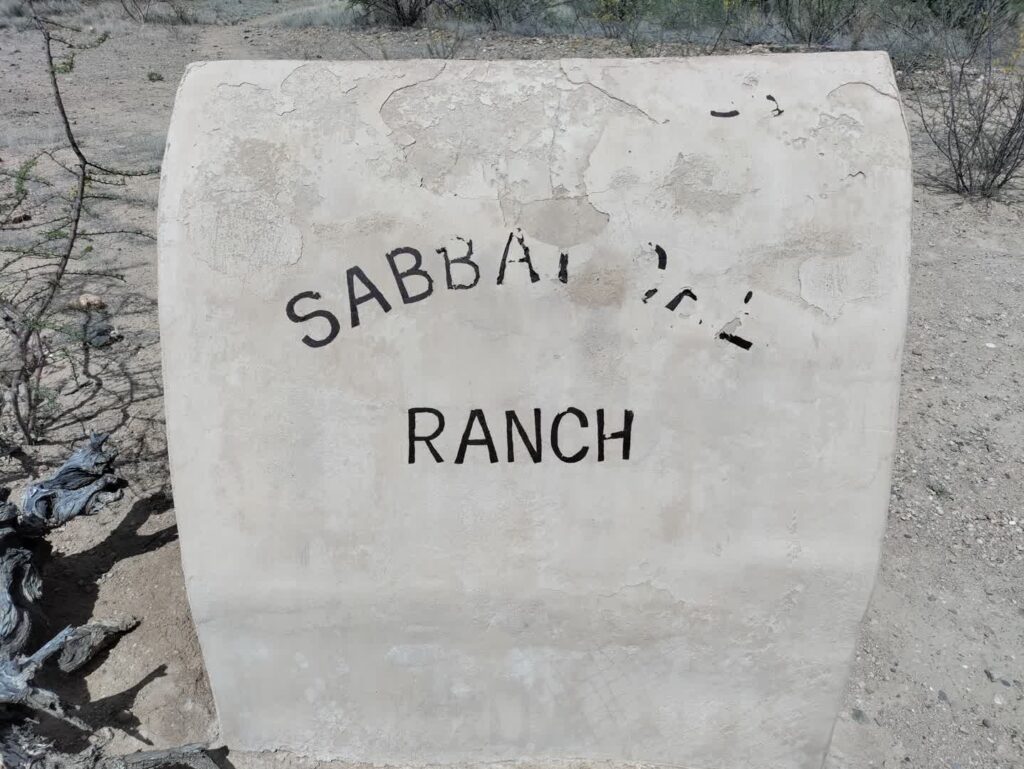
What About Clay?
Clay is a common ancient and alternative building material. It can be used to make cob (clay, sand, straw, and water) which has been used to make adobe buildings, bricks, plaster, and numerous other projects. Cob can be vapor permeable, but it is also much more vulnerable to water erosion. It’s really not for outdoor use if you want something durable. It also cracks during setup much more readily than lime. It is more popular than lime for earthen floors because it has a softer feel to it.
The main reason we have avoided cob at Sabbatical Ranch is that the straw content starts molding after it gets wet and continues if there’s any kind of “damp” problem. This is also a problem with straw-bale homes – another common alternative building method. Straw is loaded with mold spores and the first time the bales get wet (before, during, or after construction) mold will begin growing and many varieties will produce mycotoxins that will permeate the structure. Wood is somewhat more resistant to mold, but all the popular wood products such as particle board are loved by mold.
We have chosen to use lime to plaster the interior and exterior of our domes, as well as for the floors. We started practicing with it two years ago and I would say we still haven’t mastered the art. It has been quite the learning curve, but it works and we improve with every project. I’ll have to write another post sometime with more pictures and details about our experience – what we have learned and done.
